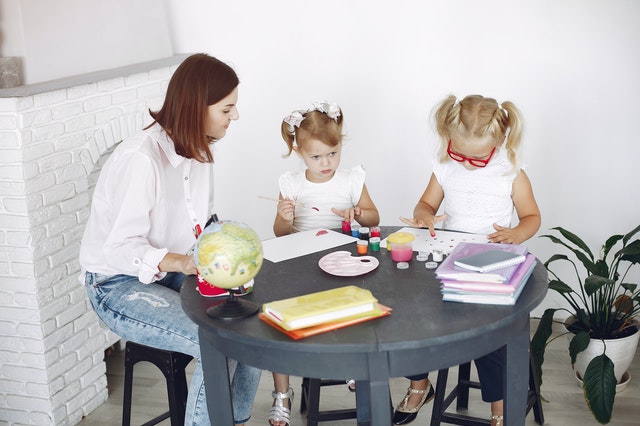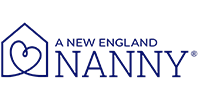
Schools are planning to open next month, but parents are trying to balance the desire for their children to be in school with their health and safety. Many families are looking at hiring private teachers to create learning pods and microschools. Our payroll partner, GTM Payroll Services, offers this guidance on what these are and how the process for hiring an in-home educator should be done.
As families adapt to the COVID-19 pandemic, we are being introduced to a whole new way of life from “social distancing” to “double bubbles.” It is all in an effort to slow the spread of the coronavirus and keep our loved ones safe.
As the pandemic creeps through the summer towards fall, many parents continue to wrestle with care for young children and – with the possibility of school buildings being closed or the start of school being delayed – the education for older kids.
Working from home is giving way to many businesses bringing their employees back into the office leaving parents to fill childcare and educational needs for their families. Even if parents are continuing to work remotely, childcare is still a pressing concern.
That brings us to the latest trend of learning pods and microschools. What are they? Should you join or start one? We’ll answer some questions to give you a sense of the newest ways to care and educate your children.
1. What is a learning pod?
A learning pod is a private, shared care set up between a small group (typically two or three) families who have children younger than school-age. They are becoming more and more popular as some daycare facilities and preschools remain closed or have limited capacity. Parents may be also seeking a “safer” alternative to daycare.
In a learning pod, families hire a private educator who works with their children in one of the family’s homes (or the location can rotate among participants). The children are typically the same age to help ensure a consistent level of instruction.
2. What is the difference between a learning pod and a nanny share?
A learning pod is most similar to a nanny share when considering childcare options. The difference is the role of the caregiver. In a nanny share, a professional caregiver looks after the children to ensure they are safe and engaged throughout the day. There may be some basic level of education in a nanny share but not to the extent and structure of a learning pod.
In a learning pod, a professional educator oversees the children. Their skillset will be different than that of a nanny as they will focus on education typical of a preschool or child learning center. Parents will have some input on the daily schedule and what is taught to their children.
3. What is a microschool?
A microschool is like a learning pod but is geared toward school-aged kids. Instruction may replace traditional schooling – if schools have not reopened or have returned to online learning – or could take place alongside what schools are offering. It may ideal for students who are not performing well with remote learning or parents have concerns about their children’s health and safety in a school building.
Similar to a learning pod, a trained educator or tutor teaches a group of similarly-aged children in one of the family’s homes. The teacher typically works from a curriculum that is like the one used in a school. Parents will not have as much say in the instruction of their children.
If the microschool is replacing the education children would normally receive in school – even temporarily – then there may be homeschool requirements to follow in your state.
4. Is forming a microschool or learning pod safer for my children than other childcare options?
Forming a microschool or learning pod with one or two other families may be safer than a traditional daycare or school setting as you’re limiting the number of people your child interacts with during the day. Research has shown that a common way for the coronavirus to spread is through close contact with others. In-home learning will not prevent your child from catching or spreading the virus, but it could reduce their chances of getting sick.
Even in a learning pod or microschool, you may want your child and their instructor to wear masks. This can greatly reduce the spread of the coronavirus. Make sure everyone is following personal hygiene guidelines (washing hands and avoiding face touching) and host families are cleaning and disinfecting their homes on a frequent basis.
5. Is the learning pod or microschool instructor my employee?
This is not as clear cut as hiring a nanny. A private, in-home caregiver is almost always your employee (or in the case of a nanny share, an employee of each family). You control their schedule, provide the tools and equipment to do the job, and dictate how care is to be provided for your child.
A learning pod teacher will likely be your employee if you and your partner families are providing the guidelines for instruction and setting the hours and days the instructor will work. A part-time tutor for school-aged kids will also be your employee.
If you plan to provide your instructor with benefits like vacation time and sick days, you will need to treat them as an employee.
6. Could my instructor be an independent contractor?
Your teacher could be considered an independent contractor if they have set up their own business and have multiple learning pods or microschools as clients. You would need to work around their availability and have little input into the curriculum and daily schedule of your children. The instructor would provide everything they need for the care and learning of your children.
If you hire a teacher through an agency who is paying the instructor, then you are not an employer. The agency takes on all the employer responsibilities. and control the conditions of employment.
If you are in doubt about the employment status of your educator, it is best to treat them as an employee. You could also file Form SS-8 with the IRS to have a decision made for you.
7. If I have an employee, what are my tax and payroll obligations?
Just like in a nanny share, each family will need to be set up as an employer. They will need to obtain a Federal Employer Identification Number and create tax accounts with the state. Families will need to pay the teacher at least minimum wage and overtime (typically time and a half for hours worked over 40 in a week) and withhold Social Security and Medicare (FICA) taxes while also paying state and federal unemployment taxes and their share of FICA taxes. There are also other nuances like workers’ compensation insurance, domestic worker bill of rights, and paid sick and family leave laws.
Aside from your legal responsibilities, it is highly recommended to provide a work agreement to your employee that detail their duties and responsibilities, schedule, pay rate, paid time off, benefits, and more.
Fortunately, there is an easier way. For the past 30 years, GTM Payroll Services has worked with families who have hired all types of employees. We make it easy by taking care of all the employer paperwork, withholding and filing employee and employer taxes, and paying your employee with direct deposit. To get a complimentary, no-obligation consultation with a household employment expert, call (800) 929-9213.
8. How do I find an instructor for my learning pod or microschool?
Since this is likely new to many families, we suggest going through a placement agency to find and hire an educator. Agencies are experienced in placing instructors in-home learning situations and will know how to vet candidates for your position. You will want an individual with advanced education and experience with your child’s age group.
A New England Nanny has homeschool teachers available! Our trusted, reliable professionals will give you peace of mind. Contact us at (518) 348-0400 for more information.
